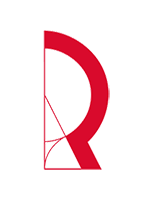
CRITOFILM
During its activity, the Fondazione Ragghianti has collected a considerable number of films on art and videos by artists. In addition to these, the Fondazione owns a copy of each of the 21 Critofilm by Carlo Ludovico Ragghianti. The Critofilm represent a unique and original document as significant examples of the documentary on art. The videos can be viewed by appointment.
Carlo Ludovico Ragghianti started his experience of critofilm in the second post war period, years in which the art documentary lived a time of great liveliness and confidence in the aesthetic renewal offered by cinema. In Europe many well-known filmmakers, signed art documentaries, followed by discussions and debates, even animated, on the relationships between cinema and figurative arts.
The cinematic approach of Ragghianti remained firmly anchored to its interpretative-critical dimension.
With the word critofilm, coined by himself, he intended to realize an “art criticism (insight, interpretation, reconstruction of the process of the work of art or of the artist) realized by cinematographic means rather than by words” (Film d’arte, film sull’arte, critofilm d’arte in Arti della visione, I: Cinema, Einaudi, Torino, 1975, p. 225-240).
At that time, other art historians also approached cinema (for instance Roberto Longhi), but unlike his colleagues, Ragghianti went far beyond the traditional role of consultant or commenter. He took full responsibility for the film and reached the production of the critofilm after an attentive and deep theoretical reflection on cinema, started in the early 1930s, along with his activity as art historian and theorist.
“As a scholar of art and also of cinema, from a long time I am convinced of the opportunity, not to mention the necessity, for the scholar to become familiar with this experience and to deepen it, not for a snobbish desire or for an ostentation of the new, but precisely because he can increase, through an active and conscious use of this language broadly the same as the “pictorial one”, his own possibilities of investigation of the works of art. For my own part, I have no hesitation in recognizing that the study of film as an expression, as a language, greatly helped me to define the terms of critical reflection”. (Ibidem)
Read more: Critofilm
Cinema as a figurative art
Already with his essay on I Carracci and art criticism in the Baroque age, Ragghianti had theorized the possibility of transferring the Croce’s distinction between poetry and prose to the level of the figurative arts that is the possibility to making a critical discourse in a pictorial form through a visual tool. Ragghianti supported the thesis of cinema as a figurative art, which affects the whole development of his film theory and practice, from his first essay, Cinematografo rigoroso, in which he affirms that cinema must be studied through the tools that are proper of art history. The identity between cinema and painting, which initially seemed to have mainly ideological reasons (of cultural legitimization),will be better clarified through a more rigorous definition of their space-time structures.
The theme of time
Time, that is the temporality of the work and of the vision, is one of the central theme of the critic thought of
Ragghianti and defines the critical line of his activity as a theorist of the figurative art.
Time in painting is represented, but not reproduced as in cinema; however, in the work of figurative art a temporal succession exists and is given by the time of vision or reading. It is a temporality activated by the viewer, by the path and the duration of the glance. A temporality that finds its measure and its scan in the structure itself of the work of art.
It is on this level that Ragghianti finds his arguments of greatest theoretical importance about the uniqueness between figurative arts and cinema.
The project of a “filmic” approach to visual arts therefore derives from a preliminary recognition of homogeneity between cinema and painting. Through the editing of the film and the movement of the camera, the film becomes a “simulation” method of the view mode of the work. Cinema as “objective correlative” of a reading path of a critical method.
The Deposition by Raphael, the first critofilm (1948)
His first critofilm, The Deposition by Raphael, already presents, from an ideational point of view, a range of innovative techniques implemented by the art historian only in the 1950s, thanks to the means made available by the enlightened producer, Adriano Olivetti. From 1954 to 1963, Ragghianti makes 18 critofilm for Olivetti. Compared to the visual aspect, the verbal comment had, for the art historian, less value, was tackled last, only after the filming and editing phases: “An art film is always, ideally speaking, silent: concrete in its own language, the cinematograph, with no other addition”. (Film d’arte, […], in Arti della visione, I, Einaudi, Torino, 1975, p. 225-240).
Criticism through images
The critofilm by Ragghianti, for their research method and their clarity of exposition, are real forms of criticism and history through the reading by images that from time to time adapts to the specific subject, to the single artistic event. Carlo Ludovico Ragghianti was a precursor also from a technical point of view, using filming tools extremely advanced for that time: cinemascope, aerial views, special trolleys for the movements of the camera, with which he could re-contextualize the work of art in the external and surrounding environment.
Regarding to the camera movements on the work of art, Ragghianti says: “Filming, like criticism, will have to be obedient to the formal expression, exclusively in the way it constituted itself. It is therefore necessary to place ourselves as closely as possible in the situation of the operating artist and almost to remake his gesture, come back to the perspective he traced and imposed for the vision and taste, to follow his choices of the point or the points of view, of the static bond or from the dynamic track of the shots, both unique and multiple, both detached and linked, both still and moving, both attiring or wrapping, emanating or centrifugal, and so on”. (ibidem, p. 225-240).

